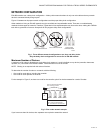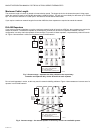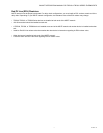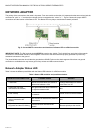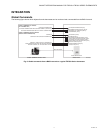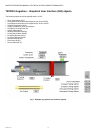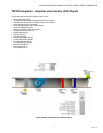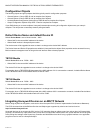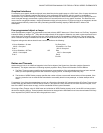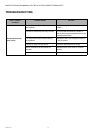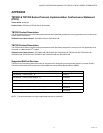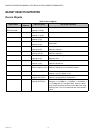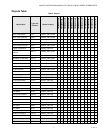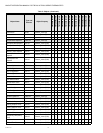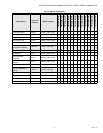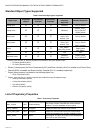
BACNET INTEGRATION MANUAL FOR TB7200 & TB7300 SERIES THERMOSTATS
13 63-4524—01
Graphical interfaces
For example, some graphic interface might poll every data linked to the graphic page on a COV basis. If the 3
rd
party device does
not support COV, the graphic interface then relies on a pre-configured polling interval, which is usually in hundredths of
milliseconds. Any device containing a monitored object could be subject to network traffic congestion if such a polling interval is
used. Honeywell strongly recommends a polling interval of 5 seconds minimum for any graphic interface. This becomes even
more critical in area graphics where a single representation might poll many devices. If proper poll rate is not respected, devices
may be reported offline by certain front end by saturating the traffic handling capacity of BACnet MS/TP without COV
subscription.
Free programmed object or loops
As for the application program, you might want to read and write any MS/TP data on an “If Once” basis or a “Do Every” loop basis
instead of reading or writing to a 3
rd
party device’s object directly in the program. Otherwise, any read or write request will occur
at the Supervisory Controller’s program scan rate, which might as well be in hundredths of milliseconds. This can easily bog
down a network as single commands can be sent to all ASC devices down the MS/TP trunks every hundredth of milliseconds
Programs writing to the devices should have a structure similar to the following:
Retries and Timeouts
Another thing to look for in a BACnet integration is the Device object of the Supervisory Controller (and the Operator’s
Workstation). This object contains the 2 following required properties: Retry Timeout and Number of APDU Retries.
1. The Retry Timeout property specifies the time between re-transmissions if the acknowledgement has not been received.
When you are experiencing problems with controllers dropping off-line, increasing this value may help.
2. The Number of APDU Retries property specifies the number of times unsuccessful transmissions will be repeated. If the
receiving controller has not received the transmission successfully after this many attempts, no further attempts will be
made.
For example, if one of the thermostats does not reply to a Supervisory Controller (SC) request, and the SC’s Retry Timeout is set
to 2000 msec and the Number of APDU Retries is set to 1 (still at the SC level), then the SC will send one other request, 2 sec
later. If the MS/TP device does not reply, it will be considered Off-line by the workstation.
So having a Retry Timeout value of 10000 msec and a Number of APDU Retries property set to 3 at the SC level may prevent
device from dropping Off-line. These properties should also be changed at the Workstation level since the workstation will likely
issue requests to any MS/TP devices when the graphics are used.
If Once Schedule = On then
MV13 = Occupied
End If
If Once Schedule = Off Then
MV13 = Unoccupied
End If
OR
Do Every 5min
If Schedule = On Then
MV13= Occupied
Else
MV13 = Unoccupied
End If
End Do



